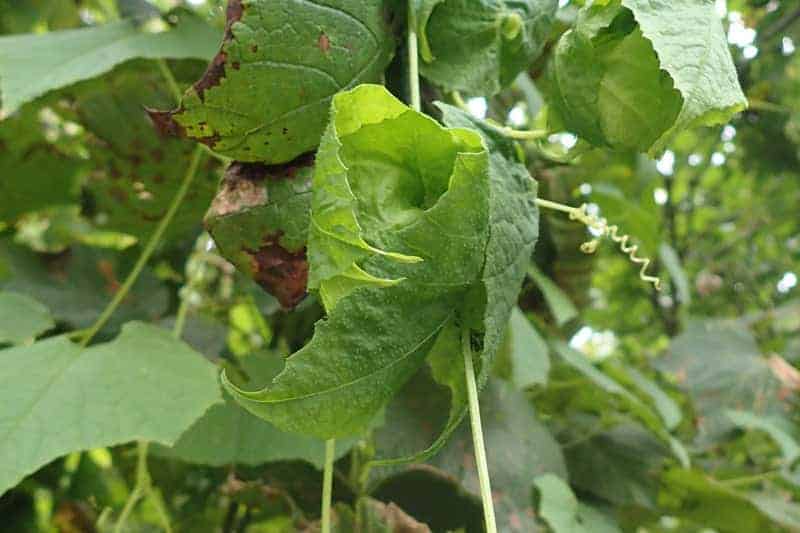The volunteer guide first observed the unusual vine behavior in 2008 and documented it every year since. The plant uses leaves for reproduction, which is very rare in the plant kingdom.

Plants produce leaves that vary greatly in size, shape, and function. From the cacti that reduce their leaves to thorns and needles to conserve water to the lush leaves found in the Amazon, leaves come in many different shapes and sizes. But few are actually used in reproduction.
The common function of leaves is to produce food for the plant through photosynthesis, but for this vine in Japan, its leaves enclose fruit clusters and enhance seed production in the vine. It’s a unique way of using leaves, curling about its fruits to envelop them and create a microclimate the fruits enjoy. It’s like the plant is making its very own small greenhouses.
The research describing the vine was co-authored by Nobuyuki Nagaoka, the 91-year-old guide at Yamagata Prefectural Natural Museum Park who first spotted this behavior in 2008. He was intrigued by the unusual leaves and looked up information about the plant online. He couldn’t find much, but he did come across an article written in 1998 by Shoko Sakai, a professor at the Center for Ecological Research at Kyoto University. So he sent Sakai a letter.
Initially, the professor thought it was a parasite or some kind of a disease turning the leaves in this bizarre way. But upon a closer look, it became apparent that the plant does this on its own accord. So the two set out to take a closer look at the planet, studying it at different altitudes at the foot of Mount Gassan, which lies some 200 km north of Tokyo.
The vine is a slender plant that inhabits the edges of deciduous forests. It’s either male or hermaphrodite, and reproduces through small, white flowers pollinated in late summer and early autumn. The flowers develop into fruits, each carrying a single seed.
Researchers were able to confirm that the plant really does create greenhouse-type conditions for its fruits — inside the leaf coccoon, it’s significantly warmer than outside.
“Under solar radiation, the ambient temperature inside an intact enclosure was up to 4.6°C higher than that near a fruit cluster whose enclosure leaves had been removed. We found that enclosures were thicker at colder sites,” the researchers write in the study.
Removing the fruits from the coccoon also negatively affected the survival and growth of the vine’s fruit, confirming that the structures help the fruit develop faster and better.
The leaves doing this were also found to do less photosynthesis than others, and were also different in structure than other plants. It’s the first time this type of leaf has ever been observed, although the underlying mechanisms have not yet been described.
Meanwhile, after publishing his first scientific paper, Nagaoka is still guiding tours at the park and observing vines.









